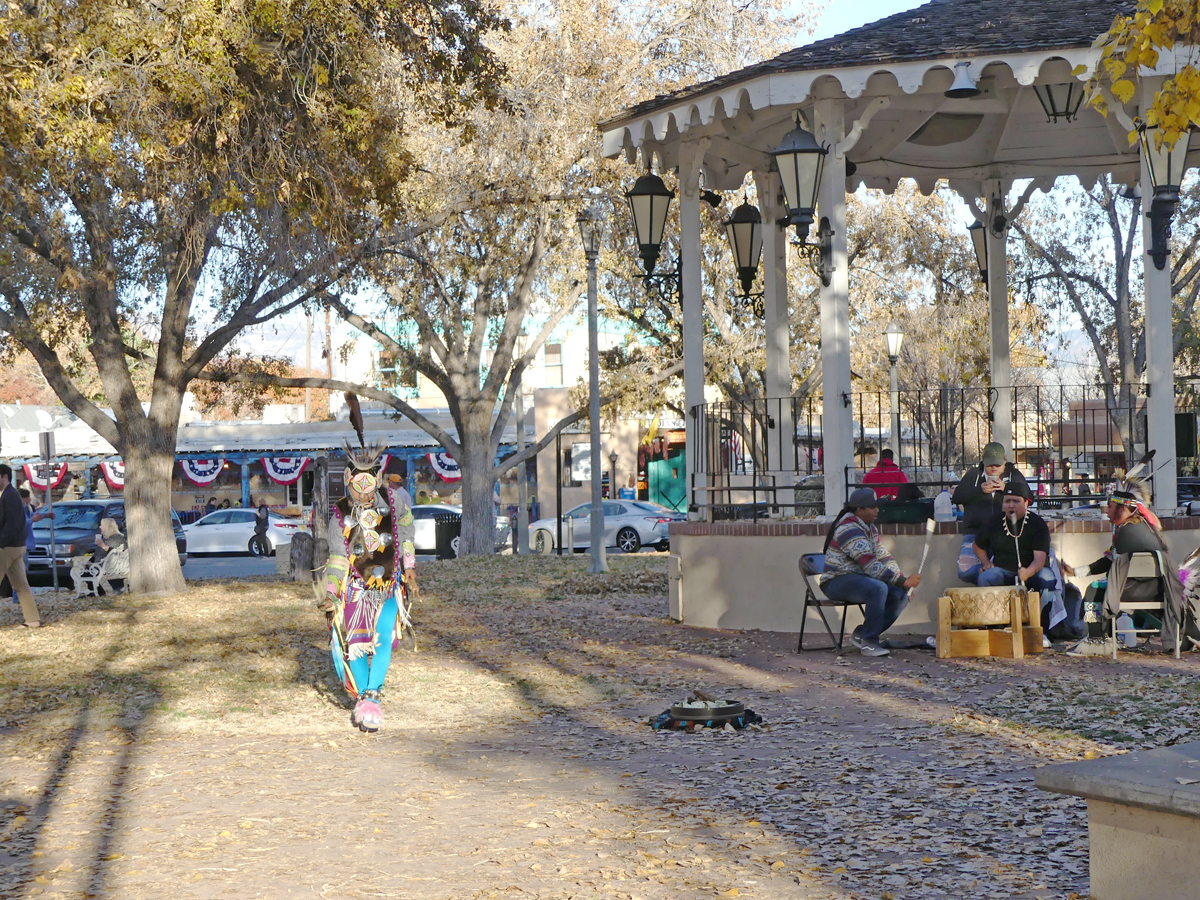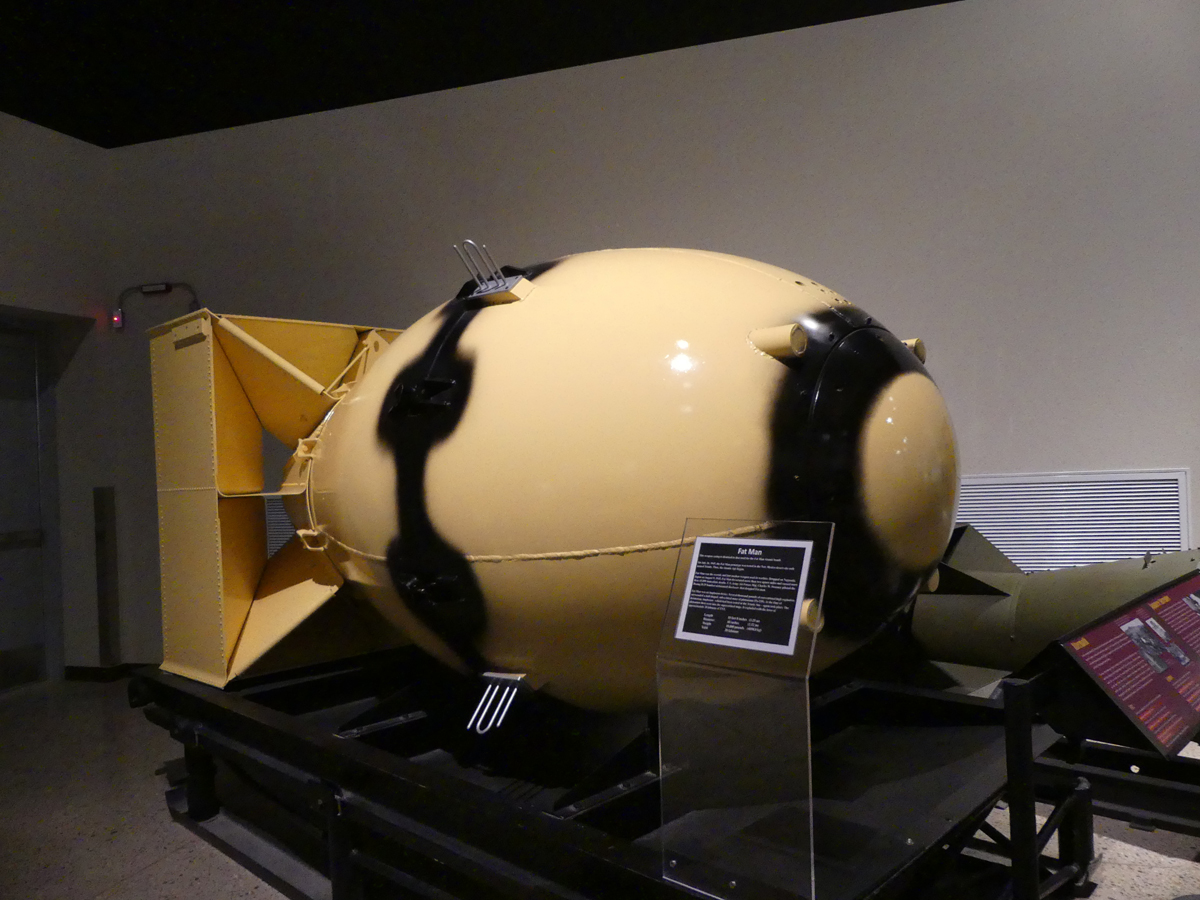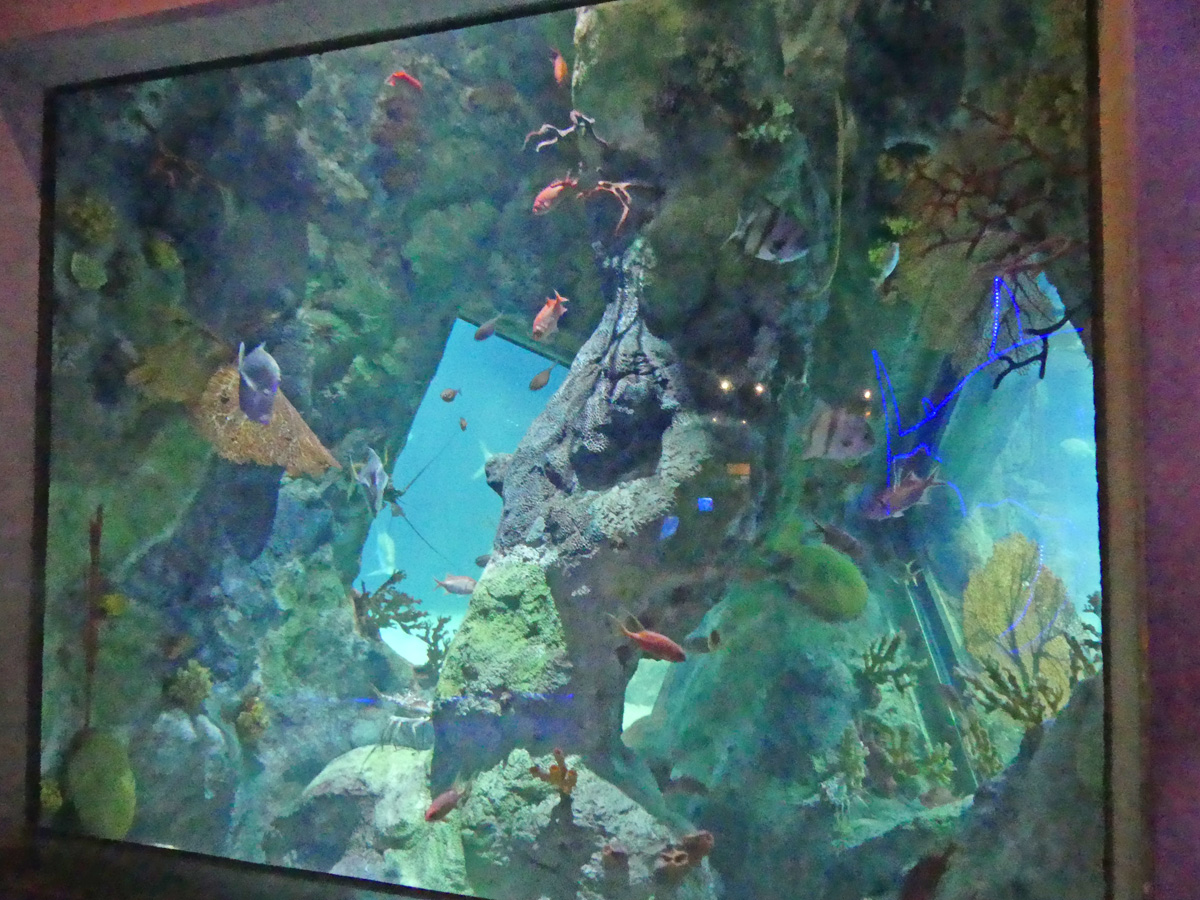
15 minute read
Along The Mother Road
By Kathleen Walls Travel Writer
AmericanRoads.net

Route 66 was given the name American’s Mother Road by John Steinbeck in his 1939 book The Grapes of Wrath because it was the route for people fleeing the dust bowl. It’s still one of America’s most famous roads. It’s a long drive, so it’s best to pick some iconic places to “Get your Kicks on Route 66.” Here are some fantastic places along the middle of the Mother Road that I visited lately.
Oklahoma City, OK

Fordson Hotel is a 135-room boutique hotel, which once housed the 1900s Fred Jones Ford Motor Company assembly plant that crafted Model Ts. So don’t be surprised to find a Model T in the lobby. The guest rooms feature high ceilings and large steel windows reminiscent of the 1900s. It’s on the National Register of Historic Places but it still has all the 21st century amenities, a spa with massage services, 24-hour fitness center, sauna and steam room, a business center, a laundry service if needed, and great free Wi-Fi. The hotel is pet-friendly. They offer complimentary shuttle service to locations within three miles. Parking costs extra, but street parking is hard to find and there are usually meters to feed.
Mary Eddy’s Kitchen and Lounge, named in honor of Fred Jones’ wife, provides upscale dining at the hotel. Pool Bar and Bodega offer lighter meals.
National Cowboy and Western Heritage Museum

If you are a history lover, the early west is showcased here. There is an entire gallery is devoted to the culture of Native Americans.

Less serious history is here too. You can go back to the thrilling days of yesterday with the cowboys of the silver screen and ride the range with Roy and Gene. There are exhibits of Clint Eastwood’s Spaghetti Westerns. It has something for everyone. My favorite is Prosperity Junction, a recreated frontier village.
Centennial Land Run Monument

The Centennial Land Run Monument, the largest sculpture series in the world, is 47 largerthan-life bronze statues. It’s in a city park open to the public year-round. It commemorates the opening of the Unassigned Land in Oklahoma Territory with the Land Run of April 22, 1889. The detail is so realistic you expect the horses to gallop forward and the wagon wheels to turn. It was created by artist Paul Moore, whose great-grandfather participated in the Land Run.
Oklahoma History Center
Oklahoma History Center takes you through the state’s history from the Native Americans to present day. One of the most impressive exhibits is the Heroine Steamboat, which predates the romantic era of steamboats on the Mississippi. It was built in 1832 and sank on May 6, 1838, and was recovered from the Red River.


Another exhibit showcases the native peoples of Oklahoma from early days to contemporary American Indian cultures. Remember, for many years until 1907, Oklahoma was Indian Territory.
The Oklahoma City National Memorial Museum
The most moving museum in Oklahoma City deals with one of the most horrific acts committed in modern history, the April 19, 1995 Oklahoma City Bombing. This museum walks you through the events when a terrorist bombed the Alfred P. Murrah Federal Building, murdered 168 innocent people, 19 of them children.
The Memorial Museum, housed in the former Journal Record Building on the corner next to where the bombed federal building stood, retells the story of what happened that day. It shows the little things so often overlooked, yet
sometimes the most poignant. Amid the crumbled rubble, a filled coffee pot remained on a table, almost untouched. A briefcase belonging to a woman coming to the federal building is displayed, making you wonder what brought her to her death that fateful day. Photos, informational placards and interactive exhibits tell the story of an event that should never be forgotten.
A portion of the building’s rubble is preserved behind glass, so you see the actual damage, not just exhibits. It’s a powerful reminder of the havoc one terrorist can create. The museum takes the visitor through the trials of McVeigh and his co-conspirators. Near the end, exhibits explain the trial. Investigations led to his co-conspirator, Terry Nichols. A third conspirator, Michael Fortier, escaped his just punishment with a plea deal and testified in exchange for a lesser penalty. The place where the Alfred P. Murrah Federal Building once stood is now the Field of Empty Chairs, Reflecting Pool and Rescuer’s Orchard.
The American Banjo Museum

A visit to The American Banjo Museum shows the banjo’s humble beginnings in this county with enslaved people playing the homemade banjos on the plantations and shows the beginning of public banjo performances in minstrel shows of the 1840s. Despite the political incorrectness of white musicians performing in blackface, this gained the banjo recognition as a professional instrument from white listeners.
As America moved into the 20th century, the banjo became accepted as a classical instrument. They show the improved instruments being produced by instrument makers. There are more than 300 jazz age banjos here: the most in any collection anywhere.
One banjo is a Vega Earl Scruggs Model fromwhen Earl Scruggs and Lester Flatt, played the classic theme song for The Beverly Hillbillies. A unique banjo was played by Kermit the Frog. When she was a guest on the Muppet Show, Julie Andrews started a tradition by signing the head of the banjo, and the tradition continued. It is signed by other Muppet guests, including Roy Rogers, Diana Ross, Johnny Cash, Gene Kelly, Peter Sellers, Elton John, and others.
Amarillo, TX
Following such a historical route, it fits to stay in a historic hotel. The Fisk Building, an eleven-story building constructed in the mid-1920s during Texas’ oil-boom years, was originally built to house doctors and dentists. The First National Bank occupied a portion of the building from 1935 to 1951. In 2011, the building was converted to the 107-room Courtyard Amarillo Downtown, one of Marriott’s Courtyard hotels. It has all the comfort and amenities you expect from a Marriott hotel with the bonus of historic touches.

The Big Texan is food and fun, making you feel like you’re on a western movie set. There’s a life-sized windmill, a big cowboy, wooden swings, and a huge plastic bull out front with a sign offering “Free 72-Ounce Steak.” The dining room is classic Old West décor, with cowboy musicians roaming around playing requests. The massive grills have grillers turning out steaks at the speed of light, with a table right in front set for anyone wishing to try for that free steak.

If you want that “free” steak the sign promised, you must eat a 72-oz steak with all the trimmings, 3 fried shrimp, garden salad, baked potato and a dinner roll, in one hour. The most spectacular win was in April 2016 when Molly Schuyler, a 128 lbs young woman, tucked away three of the 72-ounce in 20 minutes. She broke all records and won a grand prize of $5000.
R. J. “Bob” Lee opened The Big Texan in 1960 on Route 66 and his sons, Bobby and Danny, carry on today. In 1970, he realized the new highway, Interstate 40, would divert much of the traffic from Route 66, so he moved the restaurant to its present location. With an onsite brewery and motel designed to look like an old western town, their latest addition is an RV park. For groups of four or more, you can ride in their black limo shuttle complete with bull horns.
Quarter Horse Hall of Fame
Since the horse was Texans’ main transportation long before cars, start with the video in the Ken & Laina Banks Theater to learn the history of the American Quarter Horse. Get the “inside story” at the X-ray exhibit. You can’t help falling in love with “Doc” the vet and “Two Bits” the horse getting his checkup.
Panhandle Plains Historical Museum
Panhandle Plains Historical Museum, a fantastic museum located on Texas A and M University Campus in Canyon, calls itself “The Smithsonian with a Texas accent” for good reason. It covers 14,000 years and 26,000 miles of Texas’ panhandle. It began as a bits-and-pieces museum during the Great Depression and continued to grow until it’s now the largest history museum in Texas, with over two million artifacts.

Panhandle Plains Historical Museum has Pioneer Town covering life in the Texas Panhandle from 1890 to 1910. You can see the village church or visit a Chinese laundry. The transportation section covers stagecoaches to classic cars. One of my favorites is the 1910 Zimmerman, one of the rarest of American-made autos, that really were horseless carriages made from old buggy parts. You’ll see lots of classic cars, the old Burma Shave Signs, and so much more.
Jack Sisemore RV Museum
Jack Sisemore RV Museum’s tucked away behind Jack’s RV sales and service. Step inside and you experience time travel. The jukebox, in a 1950s diner, is playing Elvis, Jerry Lee Lewis, or Fats Domino.
Stepping farther back in time, there’s a Lampsteed Kampkar, designed a kit to fit the Model T Ford chassis. Its rear compartment folds to become two double beds. Upright, the bed frame’s center section becomes a pair of bench seats. Then there is the big 1948 Flxible, that was used in Robin Williams’ movie RV. The nostalgia continues with a shiny like-new 1962 Airstream, the little aluminum 1946 Teardrop or the teensy red and white 1953 Fleetwood Travel trailer. As a longtime RVer, I was in heaven here.
Palo Duro Canyon State Park
Texas doesn’t get outdone in the nature department. The 120-miles-long Palo Duro Canyon is second only to the Grand Canyon in the United States. Once you enter the park, the views change from flatlands to fantastic canyons with amazing colors and shapes. Every formation is unique. There are hoodoos, mushroom-shaped columns of sedimentary rock jutting out of the canyon floor, and ruffle, called by early Spanish explorers “Spanish Skirts.” Early Spanish explorers named the canyon “Palo Duro” meaning “hard wood” because the area is filled with mesquite and juniper trees. The cliffs and formations are variations of reds and oranges with some buff mixed in. The mesquite trees are bright green and the juniper a darker green. Tiny flowers standing alone on barren sand or rock are very eye-catching.

Best place to start is at the Visitors Center. There is a museum of natural and historical facts about the canyon here. You can stay at the park’s campground or cabins. If you visit from June to August, you can see Texas, the state play of Texas, at the Pioneer amphitheater, carved in one of the canyon’s natural basins.
Albuquerque, NM
Hotel Chaco
Hotel Chaco isn’t a historical hotel, but it has incorporated elements of ancient Chaco Canyon’s ancient structures do deeply influence the hotel design you feel you are visiting an ancient Aztec building. There are elements including precise stone masonry, vigas and latillas for rooftop structures and alignment with the sun’s rotation. The rooms combine the pale wood and Native American art to provide all the modern conveniences, so you have the best of two worlds. They were a winner in the 2023 Sunset Travel Awards “Where to Stay: Best City Stays” for travel in the West.
Old Town
Hotel Chaco in Old Town, which takes youback to 1706, where century-old adobe houses now are restaurants serving classic Mexican food, and tiny artisan shops selling jewelry, rugs and pottery made by locals. Old Town Plaza, overlooked by 18th-century San Felipe de Neri Church, usually has musicians playing old Spanish music on the gazebo.
New Mexico Museum of Natural History and Sciences
Travel back farther in history to prehistoric New Mexico at nearby New Mexico Museum of Natural History and Sciences where you’re greeted out front by their resident dinosaurs, Alberta and Spike, a pair of realistic sculptures. The museum tells New Mexico’s story from the first multi-cellular life to the space age. One impressive exhibit deals with climate change.
The Albuquerque Museum
The Albuquerque Museum is also in Old Town. It tells the story of Albuquerque with an artistic flare displaying painting and sculptures. It has traditional art, but there’s a lot more. From the culture of the Tiwa people who lived here once to the city’s contribution to the atomic age, you will find it here.
National Museum of Nuclear Science and History

There’s much more about the Nuclear Age at the National Museum of Nuclear Science and History where you will find “Pioneers of the Atom” exhibit. It’s a Smithsonian affiliate and the nation’s only congressionally chartered museum about the Atomic Age. The museum traces nuclear history from the first splitting of an atom to today’s uses of nuclear power. There’s an exhibit about Las Alamos and a model of “Fat Man,” the bomb we dropped on Nagasaki, Japan. Children will enjoy learning while having fun in the Children’s Section. Outside there’s a display of bombs and the planes that dropped them.
Turquoise Museum
The Turquoise Museum is the place to go treasure hunting. It’s a treasure on many levels. Jacob Lowry, museum director and fifth generation in the family business, told me so much about the gem. The building itself is also a treasure. It looks like a historic German castle but was built in 2008 by Gertrude Zachary, a wealthy jeweler, who lived there until her death in 2013.
The museum’s collection contains some of the rarest and most expensive turquoise stones in the world. The museum helps you learn the history of turquoise, how to tell real from fake stones, and the art of cutting turquoise.
Balloon Museum

Balloon Flight
Hot-air balloon flights are one of the main things Albuquerque is known for, so be sure to book a flight. When I visited, I took a Sunrise Flight with Rainbow Ryders. Operating since 1983, it’s the largest hot-air balloon company in the Southwest. Troy Bradley was the pilot and did a spectacular job of navigating. The views and sights are beyond words. Even though you are high in the sky, there is no feeling of falling.

The Indian Pueblo Cultural Center
Learn Native American history and culture two ways at The Indian Pueblo Cultural Center. You are on Native American land here. Natives from 19 nearby pueblos perform traditional dances with a mixture of dance, costume, chant, and words that tell the story of their beliefs and culture. In the museum, the exhibits tell of New Mexico’s Native Americans from the earliest pictograms to modern-day tribal members.

The Bio Park
The Bio Park is really three attractions in one; Aquarium, Botanical Garden, and Zoo. The Botanical Garden covers over 1.5 miles of paths through its multiple gardens: Old World Walled Gardens, Mediterranean Conservatory, Desert Conservatory, Camino de Colores, Rio Grande Heritage Farm, Sasebo Japanese Garden, Curandera Garden, Butterfly Pavilion, Railroad Garden, Children’s Fantasy Garden, Dragonfly Sanctuary Pond, Cottonwood Gallery, and the BUGarium. The outer gardens are mainly desert plants such as cactus and prickly plants, but inside the glass enclosed conservatory you’ll find beautifully colored flowers from all over the world along with desert plants.
By the Aquarium entrance, there’s a 1950 Hudson crossing over the Rio Grande that reminds you that you are on Route 66. The aquarium brings together historical and present-day aquatic life in the Rio Grande. It shows the problem of pollution on our sea life.

The aquarium is divided into many sections: Rio Grande at Central Bridge, Atlantic Coral Reef, Eels, Gulf Coast Gallery, Inside the Wreck, Jellies: Aliens from the Sea, Pacific Coral Reef, River Otters, Salt Marsh, Sea Turtles, Shallows
& Shores, South Pacific Gallery, Southern stingrays Touch Pools and the Shark Tank. There is even an exhibit that gives a glimpse of life on a shrimp boat.

Throughout the aquarium there are educational placards telling of the environmental damage things like plastics and oil spills are doing and steps we can take to help prevent the destruction of these precious life forms.
The zoo next to the Rio Grande was originally founded in 1927 as the Rio Grande Zoo. The 64-acre zoo is home to over 900 animals from around the world, including an Africa exhibit area, an Australia exhibit area, the Cat Walk and a herpetology area. They educate humans about the importance of conservation and sponsor breeding programs to help species survive. One of their latest achievements is the birth of a critically endangered ocelot kitten born July 8, 2024 to nine-year-old Lucy. Ocelots once ranged throughout the Southwest, but now South Texas is believed to be the only remaining native range of the fewer than 100 wild ocelots in the United States.










